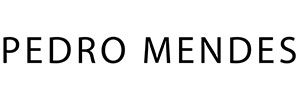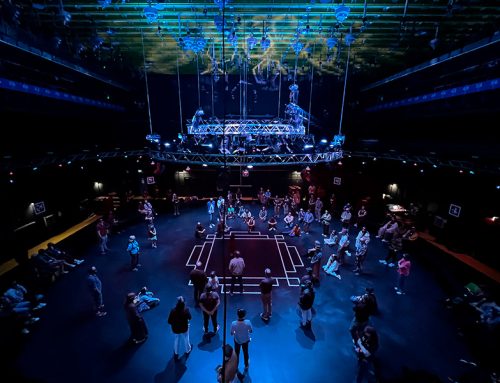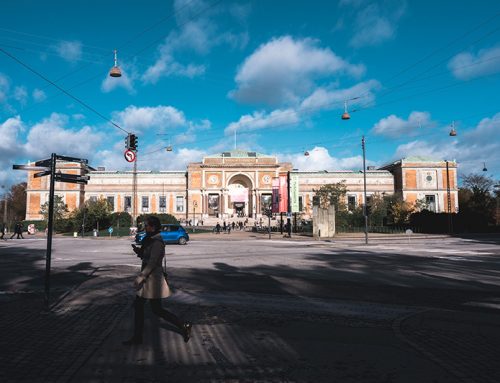Continuing the series of interviews with professionals operating at the intersection of Culture and Digital, my guest this week is Maurice Seleky, head of Communications and Marketing at the Amsterdam Museum. Here’s his input on several issues related to his work.
What’s the Amsterdam Museum’s main goal?
We connect residents and visitors of Amsterdam with each other and with the city. We do this by programming, presenting and collecting Amsterdam’s objects and stories.
What main characteristics must a professional working in Communications have?
In my opinion communications professionals should be good storytellers ánd good listeners. Characteristics as curiosity, creativity, enthousiasm and accuracy are very important. And you’re the most convincing if you truly believe in the organisation, services or products you communicate for. So choose a cause that’s near to your heart.
What’s your main mission at the Amsterdam Museum?
My personal mission at the museum is to – together with all my wonderful colleagues – make the Amsterdam Museum one of the best city museums in the world. And by doing that – trying to connect inhabitants and visitors of Amsterdam with each other around inclusive perspectives on history and heritage.
How does past, present and future cohabit in the Museum?
We present exhibitions on a wide range of topics related to Amsterdam. We share knowledge, show art and heritage, and tell relevant stories – past, present and future. Historical and contemporary stories that make the city what it is, in all its forms. We do this at our museum locations in the historic city centre – the Amsterdam Museum Wing on the Amstel, House Willet-Holthuysen at the Herengracht and the soon to be completely renovated Burgerweeshuis complex. And we also do this together with partners across the city, for example in city districts such as Nieuw-West, Zuidoost and Noord.
How does the Amsterdam Museum stand out from the many cultural offerings of the city?
We manage, research and make accessible the more than 100,000 objects in our art and heritage collection. The museum manages this collection, which is largely owned by the city of Amsterdam and therefore also by its residents, so that it remains permanently available as a source for new presentations, research and inspiration. Next to this the Amsterdam Museum involves the entire city in its activities. We focus on a broad public from the city, the Netherlands and the world. We are a network museum, working together with institutions, makers and involved citizens on the basis of trust and equality. We use co-creation and co-production as fundamental principles, create space, and take our responsibility as a central and inclusive institution in the Amsterdam art, culture and heritage sector.
Do you make a big use of technology in the Museum’s activity?
Like many other musea, we use a wide range of different technologies at the Amsterdam Museum. We use co-working software as Teams and Slack, and specialised systems as Motify, Smart PR, Meltwater and Asana. And next to the use of leading social media platforms, we use innovative audio tour technology and narrow casting systems.
In what ways do you use the strengths and avoid the pitfalls of social media?
At the Amsterdam Museum we’re well aware of the risks of social media, but for contemporary cultural brands social media are indispensable. In our strategy, we focus as much as possible on developing meaningful stories for our community. And on collaborations with inspiring makers and organizations. Although we also conduct classic conversion-oriented online marketing campaigns, in our general digital communication we mainly try to focus on our deep museum content. With this core content we try to persuade the public to get to know us better.
What is your typical day like?
There is no typical day at the museum. In fact, we’re open seven days a week, during the whole year. As a head of Communications and Marketing I have the privilege to work with lot’s of inspiring people and on a great number of projects in various stages of development. Next to the many campaigns and bigger projects like our rebranding or the launch of our new digital platform, I also contribute to the general policies of the museum as a member of the management team. So my work differentiates from strategic asignments to creative activities, from managerial tasks to operational excecution – and that eclectic mix makes it very interesting with never a dull moment.
What one project do you find defines your work best?
Together with our artistic director Margriet Schavemaker and other colleagues I developed the concept of the digital exhibition Corona in the City. This project, in a collaboration with a large number of partners, sought to highlight the impact of the coronavirus on the city of Amsterdam and its inhabitants. The exhibition features contributions from hundreds of Amsterdam’s residents and organizations – their photographs, videos, texts and sound recordings about this period of time. From moving stories of remote visits to atmospheric pictures of the empty city, and from the emotionally charged reports from the key sectors to creative images of life in quarantine.
Where do you see the Museum in ten years?
Hopefully we’ll be back at our location Burgerweeshuis in the city centre, which is now temporary closed due to renovation plans. The new Amsterdam Museum will be an open, welcoming museum with a clear internal route and large rooms for the collection, presentations, and temporary exhibitions. It includes multifunctional spaces for education and learning, workshops, discussion, lectures, and other public programs. With its open access on the ground floor and the many windows facing the street and courtyards, it forms a clear connection with the city and its inhabitants. I see this new Amsterdam Museum as an inclusive third place for everybody who loves the city.
What’s the one thing you would improve in Amsterdam?
The social and economic inequality in the city in combination with the climate crisis. We need a just and sustainable city for everybody, based on social equity for it’s inhabitants and especially for it’s children.
What’s your favorite piece at the Museum?
The Witkar, the first electric automobile of Amsterdam and the world’s first modern car sharing system. Developed in the 1970s by the designer Luud Schimmelpennink as a means of emission free travel and shared mobility, it was a revolutionary concept, far ahead of it’s time.
About Maurice Seleky
 Maurice Seleky (1982) is an experienced leader in the creative and cultural industries, senior communications strategist, moderator and author. Currently Seleky serves as head of Communications & Marketing and member of the management team at the Amsterdam Museum. In 2021 he was nominated as ‘Culture marketeer of the Year’ by Cultuurmarketing, the platform for marketing and communication professionals in the Dutch cultural sector. Seleky is also frequently active as a moderator, podcast host and public speaker, participating in a wide ranges of public programmes. In addition Seleky is author of the novels ‘Ego Faber’ and ‘Een tragedie in New York’ at Ambo-Anthos Publishers.
Maurice Seleky (1982) is an experienced leader in the creative and cultural industries, senior communications strategist, moderator and author. Currently Seleky serves as head of Communications & Marketing and member of the management team at the Amsterdam Museum. In 2021 he was nominated as ‘Culture marketeer of the Year’ by Cultuurmarketing, the platform for marketing and communication professionals in the Dutch cultural sector. Seleky is also frequently active as a moderator, podcast host and public speaker, participating in a wide ranges of public programmes. In addition Seleky is author of the novels ‘Ego Faber’ and ‘Een tragedie in New York’ at Ambo-Anthos Publishers.
About the Amsterdam Museum
See for more information about the Amsterdam Museum: http://www.amsterdammuseum.nl







Leave A Comment